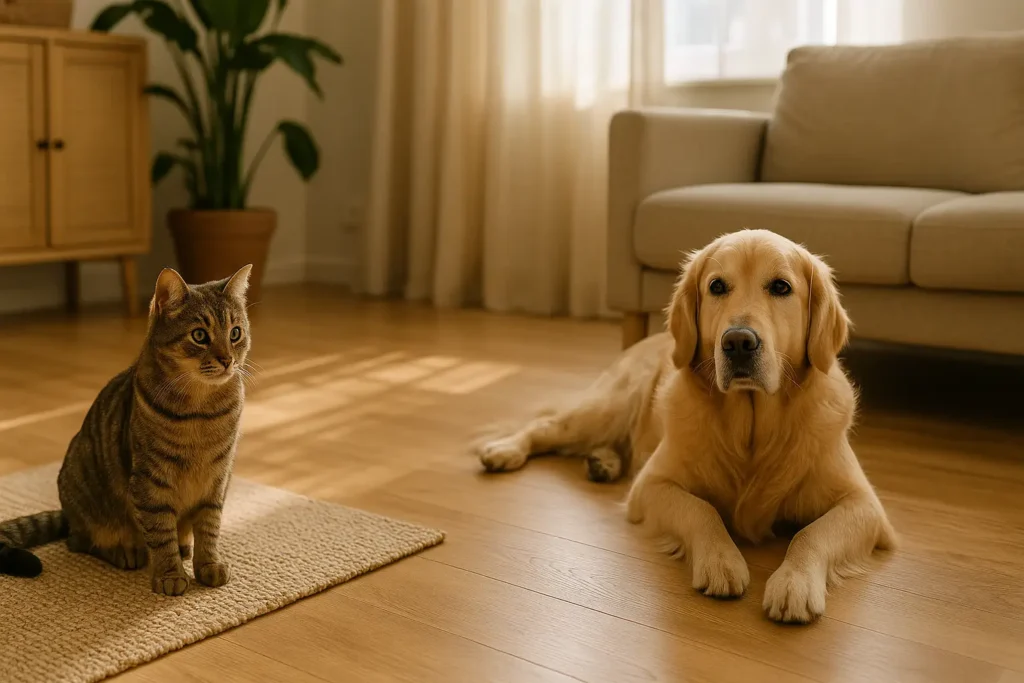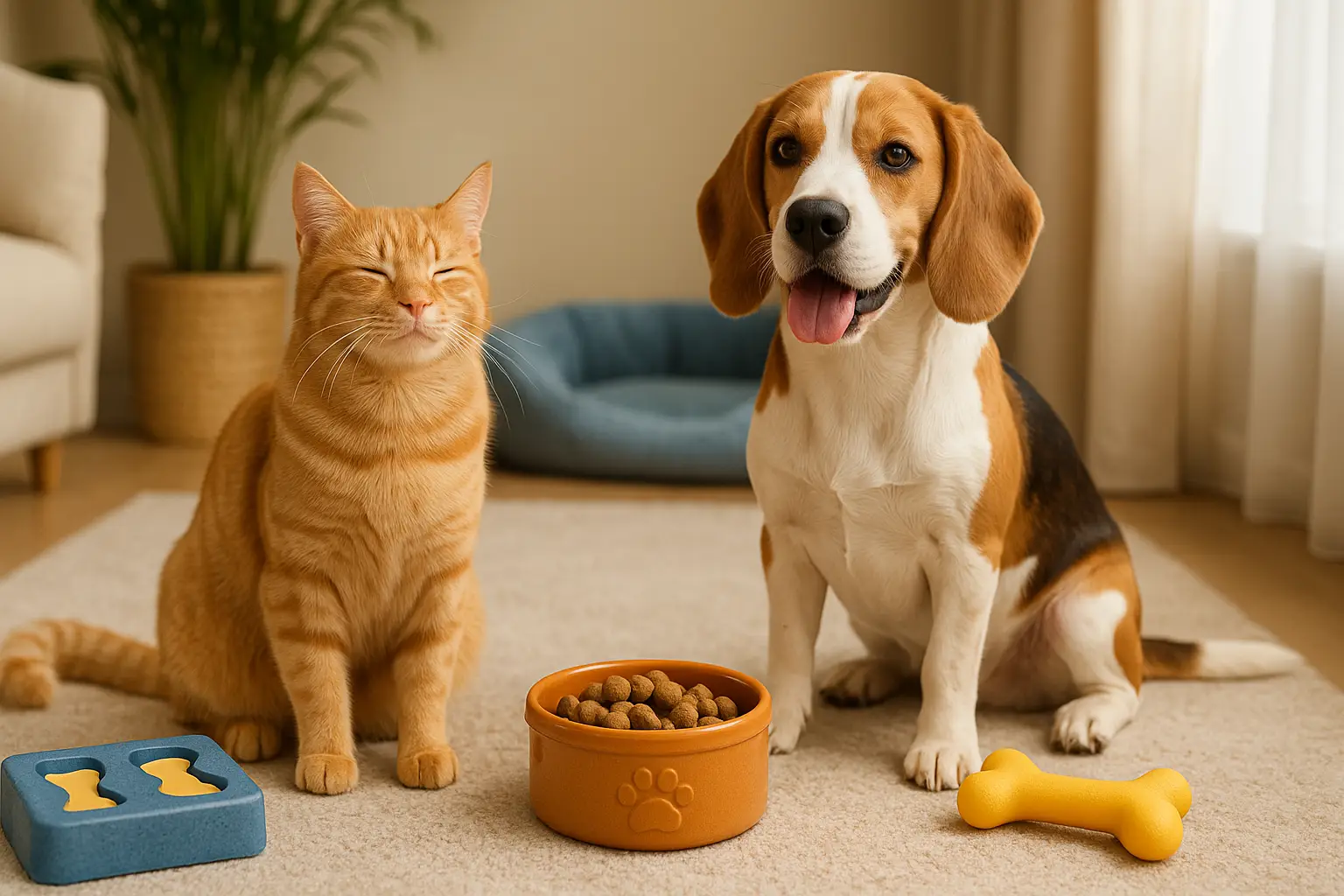How to Balance Independence and Companionship in Your Pet’s Life
Pets are more than companions—they’re emotional beings with unique needs. While they thrive on love and connection, they also benefit deeply from independence. Balancing these two aspects—companionship and autonomy—is one of the most powerful ways to raise confident, well-adjusted dogs and cats.
When we give pets space to make decisions, rest undisturbed, and engage on their own terms, we honor their emotional health. But when we also provide consistent affection, structure, and shared experiences, we nurture the bond that makes them feel truly safe.
In this guide, we’ll explore how to find that balance—giving your pet the freedom to flourish while remaining an active, loving part of their daily life.

Why Independence Matters for Pets
Some pets are naturally independent; others cling to your every move. Regardless of temperament, all pets benefit from the ability to self-soothe, explore, and rest without constant engagement.
Benefits of Encouraging Independence in Pets:
- Reduces separation anxiety
- Builds emotional resilience
- Prevents over-dependence on humans
- Supports natural exploration and confidence
- Helps avoid behavioral issues like barking, meowing, or destructive chewing
A secure pet is one that knows you’re always there—but doesn’t panic when you’re not.
Step 1: Understand Your Pet’s Attachment Style
Pets, like people, have emotional tendencies.
Clingy Pets:
- Follow you from room to room
- Struggle when left alone
- Demand constant attention or reassurance
Independent Pets:
- Choose when to engage
- Seek alone time
- Prefer observation before interaction
Most pets fall somewhere in between. Recognizing their attachment style is the first step in shaping a balanced daily routine.
Step 2: Build Predictability Through Routine
Structure gives your pet emotional security—even when you’re not constantly present.
Include in Your Routine:
- Regular meal times
- Scheduled walks or play sessions
- Consistent cues for “alone time” or “quiet time”
- Rituals for comings and goings
The more your pet can predict, the less they worry when they’re alone.
Step 3: Create Safe, Stimulating Alone Zones
A peaceful space for solo rest or play encourages self-reliance.
Ideas:
- A cozy crate or quiet bed in a low-traffic room
- A perch or window view for cats
- Calming items: chew toys, scent blankets, soft music
- No overstimulation: avoid loud TV, harsh lighting, or constant access to you
Teach your pet that this space is theirs—and that they’re safe in it.
Step 4: Use Positive Reinforcement to Encourage Independence
When your pet chooses independence, reward it with praise or a small treat.
Examples:
- When your dog settles in their bed instead of following you
- When your cat naps alone in a cozy spot
- When your pet plays with a toy instead of seeking attention
Celebrate the behavior you want to see more of—without forcing it.
Step 5: Avoid Over-Soothing or Over-Entertaining
It’s tempting to comfort your pet constantly or fill every moment with engagement—but this can create emotional dependence.
Avoid:
- Picking up or petting your pet every time they seek it
- Reacting dramatically when leaving or returning home
- Allowing your pet to interrupt your quiet moments every time
Instead, teach them that love includes space.
Step 6: Set Clear, Loving Boundaries
Boundaries don’t diminish affection—they reinforce stability.
Try:
- Not allowing your pet on your lap every time they jump
- Gently redirecting if they paw or bark for attention
- Creating “quiet hours” where they rest in another room
Consistency and calm correction help your pet learn emotional self-regulation.
Step 7: Encourage Solo Play and Mental Enrichment
Solo activities build confidence and problem-solving skills.
Tools for Dogs:
- Stuffed KONGs
- Lick mats
- Puzzle feeders
- Hide-and-seek games with treats
Tools for Cats:
- Interactive solo toys (balls, tunnels, springs)
- Window perches for bird watching
- Catnip puzzles
- Timed feeders
Let them “earn” rewards on their own—it boosts emotional satisfaction.
Step 8: Schedule Together Time Daily
Independence doesn’t mean distance. Quality companionship remains essential.
Prioritize:
- One-on-one play
- Training sessions or shared learning
- Brushing or grooming rituals
- Walks, cuddle time, or quiet togetherness
When together time is intentional, pets don’t need to cling constantly—they know it’s coming.
Step 9: Practice Short Separations and Build Up Gradually
If your pet struggles with alone time, don’t go from 0 to 8 hours.
Desensitization Steps:
- Leave the room for 1–2 minutes, return calmly.
- Extend to 5, then 10 minutes over days.
- Start leaving the house for brief errands.
- Always come back calmly, without dramatic greetings.
This builds confidence and teaches your pet that you always return.
Step 10: Recognize Signs of Healthy Balance
A pet with emotional balance:
- Enjoys quiet time alone
- Seeks interaction but doesn’t demand it
- Responds calmly to you leaving or returning
- Shows affection while also resting independently
This balance supports better behavior, fewer stress responses, and a stronger bond.
Step 11: Include Independence in Play and Training
Even in interaction, you can encourage autonomy.
Ideas:
- Teach “go to your bed” as a positive, rewarded command
- Reward self-initiation during training (sitting calmly, choosing toys)
- Allow your pet to “lead” the game sometimes (especially dogs)
- Create off-leash play zones (with boundaries)
Letting pets express themselves builds emotional safety.
Step 12: Avoid Humanizing Every Emotion
Pets feel deeply—but they don’t process solitude the same way people do.
Avoid interpreting independence as:
- Rejection (“my cat doesn’t love me”)
- Guilt (“my dog is sad without me”)
- Punishment (“they’re ignoring me for leaving”)
Instead, respect their autonomy—and love them for it.
Step 13: Use Technology When Necessary, Not as a Crutch
Cameras, feeders, and pet monitoring apps can help—but don’t replace human connection or independence-building.
Use tech to:
- Check on pets during early alone-time training
- Deliver meals if you’re away on schedule
- Offer background music or light
But don’t use it to “talk” to pets all day or respond to every movement—they need to disconnect too.
Step 14: In Multi-Pet Homes, Encourage Individual Identity
Each pet deserves their own balance.
- Create separate sleeping or retreat spaces
- Feed in different areas to avoid competition
- Offer one-on-one play or training
- Respect different emotional needs within the pack
Independence includes the right to be oneself—even among siblings.
Step 15: Revisit the Balance Over Time
Life stages affect attachment. Reassess as your pet grows.
Puppies and Kittens:
- Need more supervision, guidance, and gentle weaning into independence
Adult Pets:
- Can handle more alone time but still need ritual connection
Seniors:
- May need more physical support and reassurance
- Still benefit from choice and calm solo time
Balance is dynamic. Stay tuned in.
Final Thoughts: Independence Strengthens the Bond
At first, giving your pet space may feel like stepping back. But in reality, it’s a powerful step forward.
You’re not loving them less—you’re empowering them more.
By supporting both their need for freedom and their desire for closeness, you create a relationship based on choice, not dependence.
And when your pet chooses to come to you—not out of fear or need, but from joy and trust—that’s the truest form of love.




Post Comment